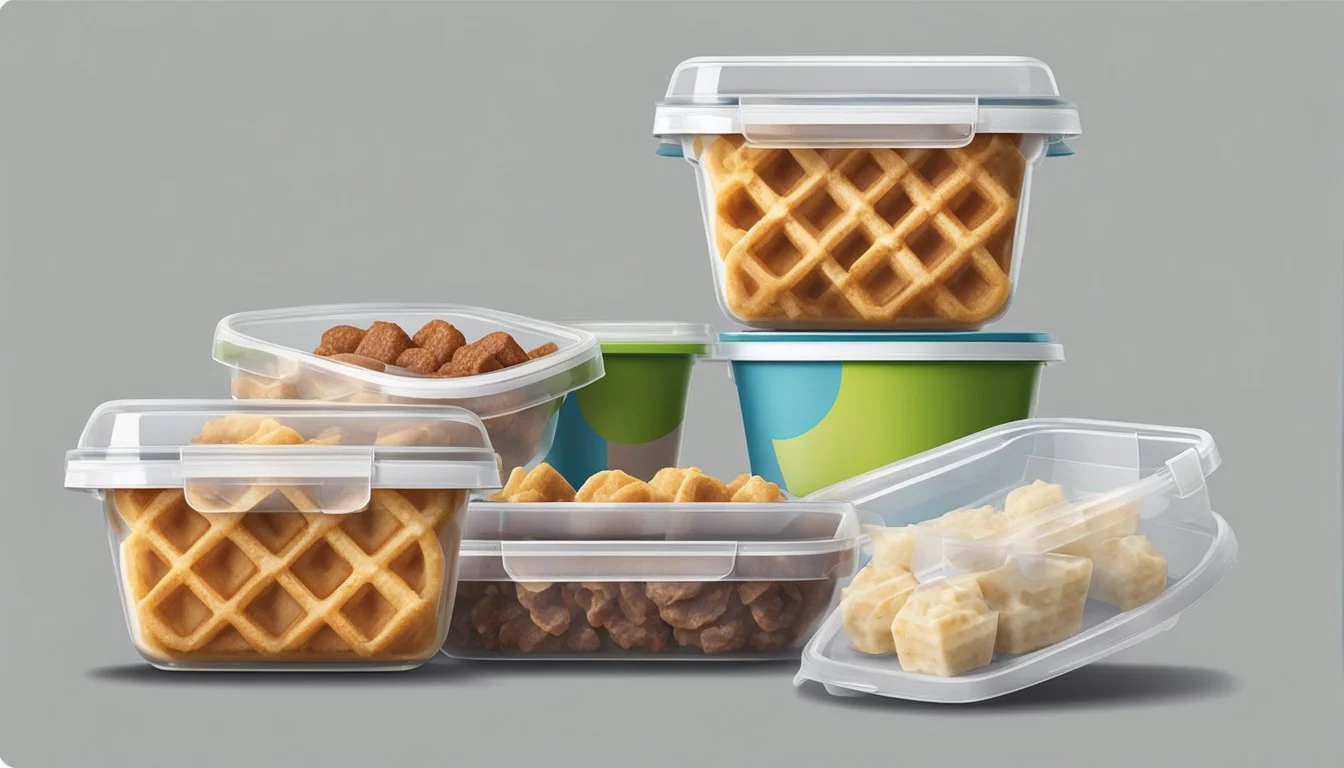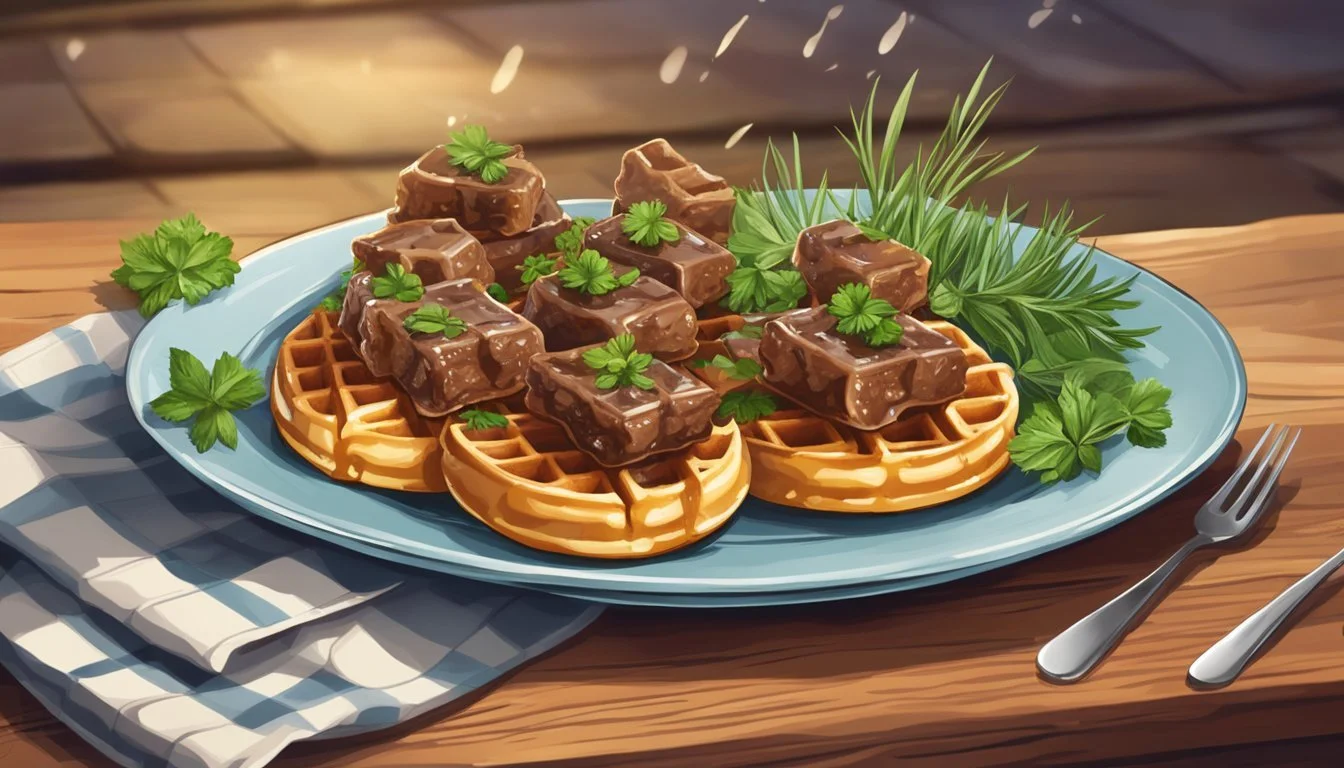How Long Do Beef and Waffles Bites Last?
Key Storage Tips
Beef and waffle bites are a delicious and convenient snack or meal option, but knowing how long they last is essential to ensure safety and quality. Beef in these bites can typically last 3 to 5 days in the refrigerator, while waffles vary depending on whether they are homemade or commercially prepared, lasting 2 to 5 days. Proper storage is vital to maintaining the best flavor and texture.
For the beef component, using airtight containers or vacuum packaging can help extend its shelf life. Ground beef may spoil faster, so always check for signs like an off smell or discoloration. Waffle bites, when sealed properly, can be stored in the fridge, with homemade versions lasting up to 3 days and commercial ones up to 5 days.
The key to enjoying these bites at their peak is diligent storage and prompt consumption. Keeping your fridge at the ideal temperature and being mindful of storage times ensures your beef and waffle bites remain delicious and safe to eat.
Understanding Shelf Life
Shelf life refers to the period during which food items like beef and waffle bites remain safe to eat and retain their intended quality. This depends on proper storage, handling, and attention to signs of spoilage.
Storage Tips
Proper storage is crucial to maximize the shelf life of beef and waffle bites. Fresh beef should be refrigerated at 40°F (4.4°C) and used within 3 to 5 days, while ground beef has a shorter window of 1 to 2 days. Cooked beef and steak bites can last 3 to 4 days in the refrigerator. Freezing beef in airtight containers or vacuum-sealed bags can extend its shelf life significantly, sometimes up to several months.
Waffle bites should be stored in a cool, dry place. Unopened waffle mix can remain fresh for 6-12 months past its printed expiration date but should be kept sealed to prevent moisture and air exposure. Once opened, store the mix in an airtight container to maintain its freshness. Freezing prepared waffle bites can prolong their edibility by several weeks.
Signs of Spoilage
Recognizing signs of spoilage is key to avoiding foodborne illnesses. Fresh beef should have a bright red color; any discoloration to brown or gray indicates spoilage. Ground beef should be discarded if it emits a strong, foul odor. Mold growth and a slimy consistency are also clear indicators that the beef is no longer safe to consume.
For waffle bites, check for odor and the presence of mold, which indicate that the product should be discarded. A change in the waffle's color or a stale taste can also be signs that it is no longer good.
Always follow USDA guidelines and pay attention to the expiry date on packaging to ensure food safety.
Optimal Storage Methods
Proper storage methods are essential to maximize the shelf life of beef and waffle bites.
Beef Storage
Beef should be stored in a refrigerator at 40°F (4.4°C). Fresh beef can last 3 to 5 days, while ground beef and variety meats should be used within 1 to 2 days. For longer storage, beef can be placed in a freezer at 0°F (-18°C).
To prevent spoilage, beef should be stored in airtight containers or vacuum-sealed bags. This limits air and moisture exposure, reducing the growth of bacteria. Ensuring the beef is completely dry before packaging is crucial, as residual moisture can cause spoilage.
Waffle Bites Storage
Waffle bites can be kept in the refrigerator for up to 2 days. For longer storage, place them in a freezer where they can last up to three months. Before freezing, let waffle bites cool completely to minimize moisture content.
Store waffle bites in airtight containers to avoid freezer burn and maintain texture. Suitable containers include freezer-safe bags or mason jars.
General Tips
Temperature: For both beef and waffle bites, maintaining a consistent, low temperature is key.
Airtight Containers: Use for all storage to prevent air and moisture from affecting food quality.
Light Exposure: Keep stored items away from direct light to avoid deterioration.
By following these guidelines, the freshness and safety of beef and waffle bites can be significantly extended.
Refrigeration vs. Freezing
Beef and waffles bites can be preserved using either refrigeration or freezing methods, each with its own set of guidelines to maintain best quality and food safety.
Refrigeration Guidelines
When refrigerating beef and waffles bites, it is crucial to store them properly to prevent spoilage. Use airtight containers or tightly seal them in plastic bags to minimize exposure to air and moisture. These precautions help maintain texture and taste.
Waffles can last up to five days in the fridge while homemade waffle batter lasts about 2 to 3 days. Beef leftovers should be refrigerated at or below 40°F (4°C) and consumed within 3 to 4 days for best quality. Always check for off smells or discoloration before consuming.
Freezing and Thawing Best Practices
Freezing extends the shelf life of beef and waffles bites significantly. Proper packaging is essential; use vacuum-sealed bags or airtight containers to prevent freezer burn and retain flavor.
Label containers with the freezing date. Waffles can be frozen for up to a month, and beef can last for several months. To thaw, move items to the fridge, ensuring they remain at a safe temperature. Avoid refreezing thawed items to maintain food safety and taste.
Properly thawed beef should be cooked to an internal temperature of 160°F (71°C) to ensure safety.
Preparation and Cooking Guidelines
Proper preparation and cooking methods help achieve optimal taste and texture for beef and waffles bites. Focusing on ideal doneness and effective seasoning provides the best results.
Achieving Ideal Doneness
Achieving the right doneness for beef bites is crucial. Medium-rare is a popular choice, where the internal temperature should reach 145°F (63°C). For medium, aim for 160°F (71°C). If you prefer well-done, reach 170°F (77°C).
Preheat the oven to ensure even cooking. To make perfect beef bites, sear them first in a hot pan with a bit of oil. This step locks in the juices and creates a flavorful crust. After searing, transfer to the preheated oven and cook based on your desired doneness. A meat thermometer ensures accuracy and safety.
Marinating and Seasoning Tips
Marinating beef enhances flavor and tenderizes the meat. Use a blend of olive oil, lemon juice, garlic, and soy sauce. Marinate for at least 30 minutes; longer marinating times can result in more tender bites.
Seasoning is equally important. Salt and pepper are basics, but adding herbs and spices like rosemary, thyme, or paprika elevates the taste. Apply a generous amount before cooking to ensure the beef bites are well-flavored.
For the waffles, ensure they are crisp and golden brown, which complements the tender beef bites effectively. Cook waffle batter according to your trusted recipe and serve warm with the beef bites.
Serving Suggestions
When serving beef and waffle bites, consider complementary sides and attractive presentation to enhance the dining experience. Pairing these bites with the right accompaniments and garnishing thoughtfully can elevate this dish from a simple snack to a delectable appetizer or main course.
Accompaniments and Pairings
Beef and waffle bites can be served as an appetizer or main course. If serving as an appetizer, pair them with light sides such as a fresh salad or rice. For a more substantial meal, consider mashed potatoes or a creamy coleslaw.
Waffle bites often pair well with anything crispy or flavorful. Adding strips of bacon can provide a delightful, juicy contrast. Another excellent option would be light, fluffy waffles which can be complemented with a small serving of syrup to balance savory and sweet flavors.
When it comes to beverages, a glass of wine—either white or red, depending on personal preference—can be a perfect complement. Consider a Chardonnay for lighter palates or a Cabernet Sauvignon for richer steak flavor profiles.
Presentation and Garnishing
The visual presentation of beef and waffle bites can significantly impact the dining experience. Arrange beef bites like ribeye, sirloin, or filet mignon on a platter with varied heights to create visual interest. Use fresh herbs like parsley or rosemary as a garnish.
Sprinkle sea salt or a drizzle of garlicky butter on top of the beef for added flavor and visual appeal. For waffle bites, consider serving them in individual portions with a side of dipping sauces—like a creamy honey mustard or tangy BBQ sauce.
Adding colorful veggies like cherry tomatoes or sweet peppers can offer a vibrant pop of color. Use elegant plates and serving utensils to reinforce a polished look. Attention to detail and thoughtful garnishing can make all the difference in creating an inviting and memorable meal.
Reheating Instructions
Properly reheating beef and waffle bites ensures they remain flavorful and maintain the desired moisture and texture. Specific methods also ensure food safety by reaching appropriate internal temperatures.
Maintaining Texture and Flavor
To keep beef and waffle bites flavorful and moist:
Oven: Preheat to 250°F. Place items on a lined baking sheet. Cover lightly with aluminum foil to prevent drying. Heat for 10-15 minutes, checking that the internal temperature reaches 165°F using a food thermometer. This method retains moisture and texture better than the microwave.
Microwave: Use medium power to reheat for 1-2 minutes. Place a damp paper towel over the bites to maintain moisture. Stir or flip halfway through to heat evenly.
Safety Precautions When Reheating
Reheated beef and waffle bites must reach an internal temperature of 165°F to ensure they are safe to eat. Use a food thermometer to check this temperature.
Avoid reheating multiple times to prevent bacterial growth. Consume reheated items immediately and do not let them linger at room temperature. Additionally, refrigerated bites should be reheated within 3-4 days of initial cooking to maintain food safety and quality.
Health and Safety Considerations
Proper storage and handling are critical to ensuring the safety and quality of beef and waffle bites. Specifically, preventing foodborne illness and recognizing high-quality meat are key factors.
Preventing Foodborne Illness
To prevent foodborne illness, both cooked and raw beef must be handled carefully.
Raw beef should be stored in the refrigerator at 40°F (4.4°C) and used within 1-2 days for ground beef and 3-5 days for other cuts. Waffle bites should also be kept at a safe temperature and used according to packaging guidelines.
Always cook beef to a safe internal temperature using a food thermometer. Ground beef should reach 160°F (71.1°C), while steaks and roasts should be cooked to at least 145°F (62.8°C) and allowed to rest.
Proper handwashing and using clean utensils are essential to minimize bacterial contamination. Avoiding cross-contamination by keeping raw meat separate from other foods is also crucial.
Recognizing Quality Meat
Recognizing the quality of meat ensures that you are eating fresh and safe food.
High-quality beef will have bright red coloration and a marbled appearance, indicating good fat distribution. It should not have any off or sour smells.
Proper packaging, such as vacuum-sealed materials, helps maintain freshness by preventing exposure to air and moisture. Fresh beef should feel firm to the touch and not be slimy or sticky.
Finally, always check expiration dates on both beef and waffle bites, ensuring they are consumed within the recommended time frame to avoid spoilage and foodborne illnesses.
Creative Variations
Exploring creative variations can elevate the flavor and presentation of beef and waffle bites, turning this classic snack into a memorable appetizer. Below are specific ideas for adjusting the recipe and incorporating alternative ingredients to suit various tastes and preferences.
Recipe Adjustments
Adjusting the recipe allows for unique flavor profiles that cater to individual preferences. For instance, using steak instead of ground beef can add a more robust and savory taste. Searing the steak in olive oil or butter enhances its richness.
To make the waffles more interesting, consider incorporating herbs and spices into the batter. Chopped rosemary or thyme can add a fragrant herbaceous note. If a sweeter profile is preferred, a touch of maple syrup or honey in the batter provides a delightful contrast to the savory beef.
Another adjustment involves the cooking method. Instead of frying the beef, try baking it in the oven. This can create a healthier dish while achieving a crisp texture. Adjustments in egg quantity and type of milk used in the waffle batter can also affect the final texture and taste, giving room for experimentation.
Alternative Ingredients
Incorporating alternative ingredients can reinvent the classic beef and waffle bites into something extraordinary. Bacon can be added to the recipe for a smoky, sweet complexity. Crispy bacon bits mixed into the waffle batter or sprinkled on top of the bites post-cooking can be a game-changer.
For those who prefer a different protein, substituting ground beef with ground turkey or chicken provides a lighter option. Vegetarian alternatives such as a meat substitute or a blend of mushrooms and lentils can also work, especially when flavored with similar spices used for beef.
The type of cheese used is another significant variation. Cheddar is a common choice, but gouda or blue cheese can introduce unique flavors. Experimenting with different toppings like avocado slices, sour cream, or even a tangy barbecue sauce can further personalize the dish to suit various taste preferences.
Tips for Best Quality and Flavor
For beef bites, start by choosing high-quality cuts. Freshness is key to ensuring a juicy, flavorful result. Store your beef at 40°F (4.4°C) and use it within 3 to 5 days. Ground beef should be used within 1 to 2 days. Packaging in air-tight containers or vacuum-sealed bags helps maintain flavor.
When preparing beef bites, searing the meat offers the best results. Use a mix of olive oil, salt, and black pepper. Heat the oil until shimmering, then sear on all sides for a caramelized, flavorful crust. Finish cooking in the oven to the desired doneness.
For waffle bites, maintaining freshness is essential. Store cooked waffles in an airtight container in the fridge for up to 5 days. This prevents moisture and keeps waffles crispy. Reheat in a toaster to restore the original texture and flavor.
When making the batter, use fresh ingredients. If you're using commercial waffle mix, check for any signs of spoilage before use. Airtight storage keeps the mix fresh for longer periods.
Storage: Store cooked beef and waffles separately in airtight containers.
Heat: Use moderate heat to prevent drying out.
Seasoning: Season beef with salt and black pepper for enhanced flavor.
Oils: Olive oil helps in achieving a perfect sear on beef.
These tips ensure your beef and waffle bites remain flavorful and enjoyable, retaining their best quality throughout preparation and storage.










